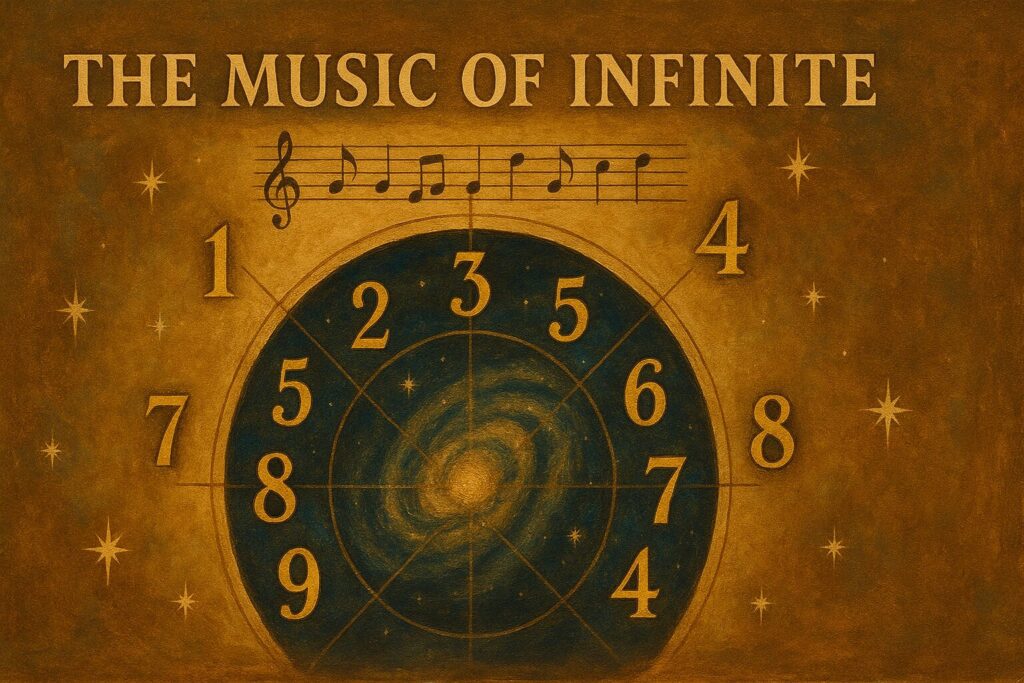Numerology

To study numerology is to listen for the hidden rhythm of existence. It is the conviction that number is not merely a measure of quantity but a revelation of quality — that each digit carries a spiritual frequency, shaping matter and meaning alike. Just as sound manifests through vibration, so the cosmos expresses itself through the vibration of number. In the occult view, mathematics is not cold logic but sacred poetry, a code through which the universe sings its creation.
The ancient world knew this truth intuitively. In Egypt, sacred numbers were woven into temple proportions; in Babylon, the motions of planets were mapped through numerical harmonies. The Pythagoreans of Greece declared that “All is number,” seeing in arithmetic the blueprint of soul and cosmos. To them, one symbolized unity, two polarity, three balance, four manifestation, and so on — a living ladder by which spirit descended into form and form returned to spirit. The Hebrew Kabbalists carried this forward, reading scripture not as text but as equation: each letter of the Torah corresponded to a number, and through their sums divine secrets could be inferred. To contemplate a number was to commune with an aspect of God.
As this tradition evolved, numerology became both mystical philosophy and personal divination. Every name and birth date was believed to carry a vibrational pattern — a signature of destiny. The vowels and consonants of a name, translated into numerical value, revealed the soul’s tone; the date of birth showed the rhythm of incarnation. Reducing these sequences through the ancient method of digital root (summing the digits until only one remains) distilled identity to its archetype. The resulting number was not a label but a melody — an expression of one’s potential and challenge in this life.
Modern practitioners recognize various schools: Pythagorean, the most common, using the alphabet’s numerical sequence; Chaldean, older and more arcane, favoring sound vibration over order; and Kabbalistic, which anchors interpretation in Hebrew mysticism. Yet all agree that numbers describe cycles — that every being, event, or intention vibrates according to a pattern of unfolding. The same principle governs astrology, tarot, and the I Ching: the microcosm mirrors the macrocosm, and pattern reveals purpose.
In Wicca and Witchcraft, numerology interlaces naturally with spellcraft and ritual design. Each number aligns with elemental and magical correspondences:
- One embodies will and beginnings — the spark of creation.
- Two harmonizes duality — moon, partnership, and reflection.
- Three governs manifestation — the triune of body, mind, and spirit.
- Four stabilizes — the quarters, the elements, the altar’s four points.
- Five moves — the star of life, motion, and human agency.
- Six brings balance and beauty.
- Seven unveils mystery and initiation.
- Eight orders power and rhythm.
- Nine completes and releases, the threshold to transformation.
When crafting ritual, witches often choose timing by numerical vibration — the ninth day for banishment, the third for growth, the seventh for divination. Even the number of candles, stones, or incantations becomes part of the equation. Thus numerology infuses the very architecture of magic, turning practice into mathematics of intention.
Beyond arithmetic, there are allied arts that share its principle of vibrational correspondence. Gematria interprets sacred texts through numerical translation; arithmancy divines the future by number patterns; angel numbers, in modern mysticism, read repetition (111, 333, 777) as signs from guiding spirits or synchronicity. In each, the underlying belief remains: that meaning expresses itself in repetition and ratio, and that recognition of these patterns reattunes the seeker to universal order.
A simple act of numerological reading can feel like listening to music whose melody you somehow remember. A witch might add the digits of her birth date — 1 + 9 + 8 + 7, and so forth — to find her Life Path number, discovering its echo in the strengths and lessons that recur through her years. She may reduce the number of her name to find its harmony or choose a magical name whose vibration aligns with her purpose. Over time, numbers cease to feel like abstractions; they become living presences, each with its own temperament — the serenity of Two, the courage of One, the wisdom of Nine.
As with all divinatory arts, the aim is not prediction but alignment. Numerology reveals the rhythm of becoming: when to plant, when to act, when to rest. It teaches that even in apparent chaos there is cadence — that every soul, like every planet or tide, moves in measure. The dowser senses the flow of energy through hand and rod; the numerologist senses it through ratio and recurrence. Both touch the same field: the living pattern of creation.
In the end, numerology reminds us that existence itself is a harmonic sequence — spirit descending into matter, number into name, breath into word. To understand number is to understand the pulse of the divine as it beats through all forms. When the witch draws a sigil, sets a candle, or traces a circle, she is echoing the geometry of that cosmic rhythm. Every act of creation becomes a count, every count a hymn, every sum a prayer.

